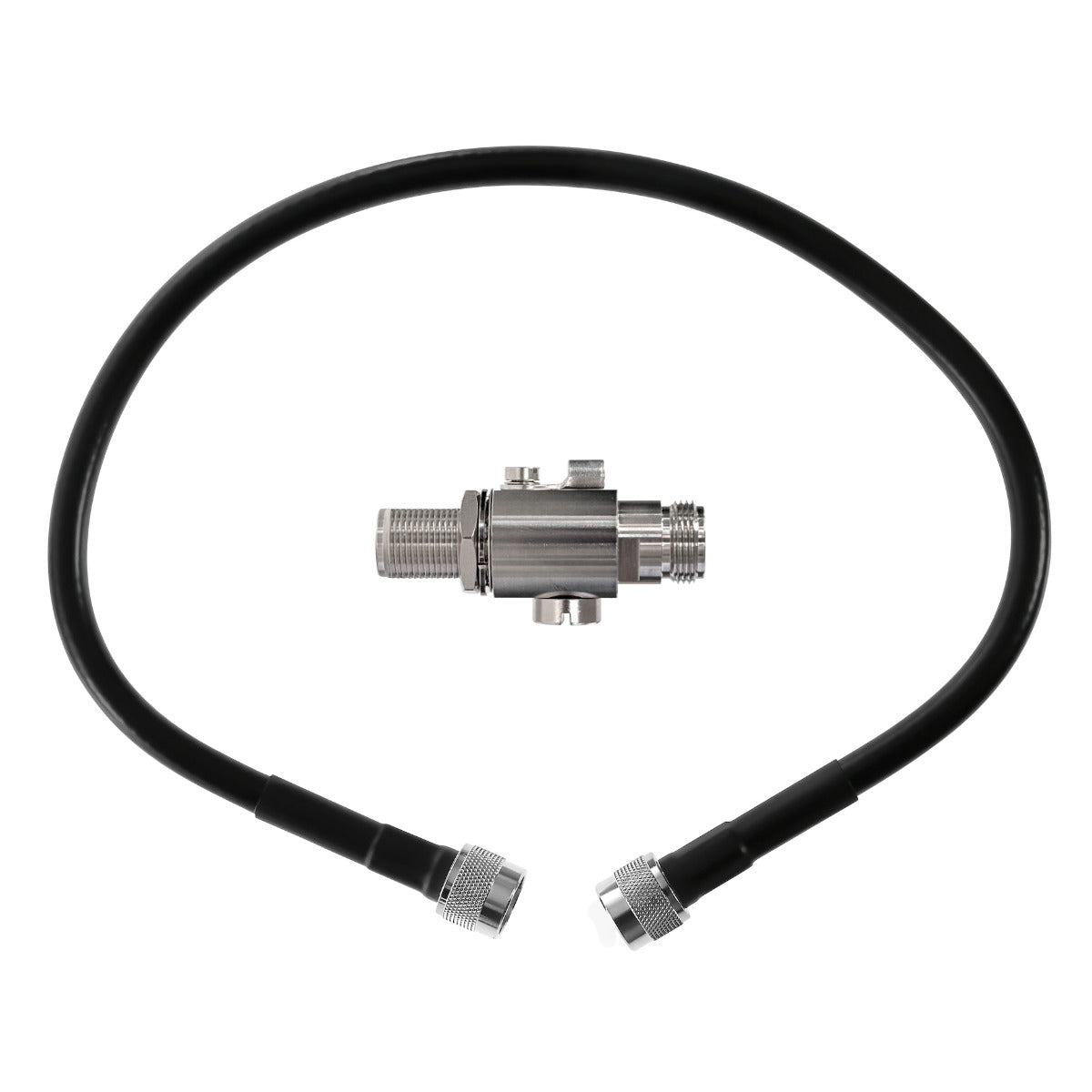Wilson 50 Ohm Lightning Surge Protector with 2' Ultra Low Loss Coax Cable | 850050
Your Order Includes:
- 90-Day Returns
- Lifetime Tech Support
- 2-Year Warranty
- Lowest Price Guarantee
How to Choose the Right Antennas for Your Booster
Outside Antennas:
- Yagi Directional Antenna: This antenna is more powerful because it focuses on sending and receiving signals in one direction. It works best when there are no major obstacles blocking its path to the cell tower. It's not ideal for areas with large obstructions like hills or buildings.
- Omni Antenna: This antenna sends and receives in all directions, so it's better for hilly areas or if you need to support multiple carriers with towers in different directions. It doesn’t need to be aimed, but it also isn’t as strong as the Yagi antenna.
- High Gain LPDA Antenna: Perfect for areas with very weak signals, this antenna significantly boosts signal strength. It needs a clear line of sight to the cell tower and requires a sturdy mount because of its size.
- High Gain Omni Antenna: Similar to the standard omni, this antenna receives signal from all directions but delivers significantly higher gain across all supported bands. It’s a much stronger option when you want more inside coverage than a standard omni will provide, especially in areas with weaker outside signal.
Inside Antennas:
- Panel Antenna: Can be placed on walls or ceilings and directs the signal towards a specific area. This antenna is great for homes and tall ceilings in buildings.
- Standard Dome Antenna: Designed to be mounted on the ceiling, this antenna spreads the signal evenly throughout the area. It's best suited for drop ceilings or spaces where cables can be run above the ceiling.
- Ultra-Thin Dome Antenna: This slim antenna also mounts to the ceiling, but is much is less noticeable. It's much stronger than a standard dome antenna, making it a great choice for places where both looks and signal strength are important.
Tips for Choosing:
- Choose Omni Antennas for general coverage with no aiming required.
- Choose Directional Antennas (Yagi or LPDA) when you can point directly at a cell tower and need stronger signal and more inside coverage.
- Interior Size Considerations: One antenna per 750-1,500 sq ft in homes, or 1,500-2,500 sq ft in open spaces like offices and warehouses.
Product Overview
Product Overview
This kit gives you the two components you actually need to protect a 50 ohm signal booster system from lightning damage: a wideband coaxial lightning arrestor and a 2 ft ultra low loss jumper cable to connect it to your amplifier.
The lightning arrestor installs on the cable coming in from your outdoor antenna. If lightning strikes nearby or a surge travels down the line, it redirects that energy to ground before it can reach your amplifier. The included jumper cable connects the arrestor directly to your system’s input, which is a required step most people miss when buying a lightning protector on its own.
This kit is designed for any booster system installed in a building that ever experiences thunderstorms — which is nearly all of them. It works with all major 4G carriers and supports 5G frequencies up to 5.8 GHz. The arrestor is built for indoor or outdoor use and includes a replaceable gas discharge tube and grounding screw. You’ll need to supply your own ground wire if grounding is required.
Whether you're setting up a home system or a commercial install, this small add-on helps protect the most vulnerable part of your setup: the coax line coming in from outside.
Specifications
Specifications
-
SKU850050-952302
-
ConditionNew
-
Impedance
-
Connectors
-
dB Loss
-
Frequency Range


